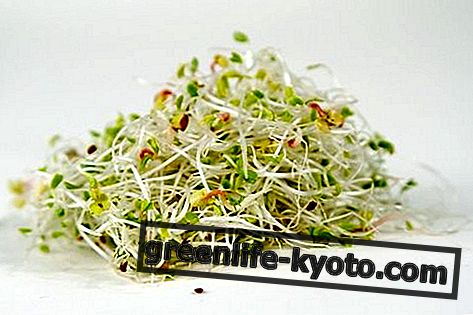
In Italy, people over 65 represent almost 20% of the total population and are on the rise: loneliness, chronic diseases and low income can worsen the nutrition of the elderly and lead to excess weight or malnutrition.
Let's see how nutrition changes in the elderly and what to eat, how and when in old age.
Nutrition in the elderly: what changes after 65 years
From the age of 65, the signs of aging on our bodies begin to become evident , and several factors affect eating habits and, consequently, the state of nutrition.
First of all the body composition changes : there is a decrease in the body water, since there is less efficacy of the thirst stimulus, and this increases the tendency to dehydration ; then there is a decrease in lean mass caused by the progressive disuse of the muscular apparatus and by the alteration of the muscle protein metabolism; increases the fat mass, which tends to redistribute and accumulate in the trunk.
Sarcopenia, ie the reduction of muscle mass, is physiological and progressive and is related to the increase in the risk of falls, to the increase of physical disability and to the reduction of basal metabolism, bone density and insulin sensitivity.
The absence of adequate physical activity and the excessive supply of energy through food are the main reasons why in the third age there is a particularly high rate of overweight and obesity.
In some elderly people, chronic diseases and progressive loss of the sense of taste can reduce appetite; tooth loss, gastric and intestinal disorders can lead to digestive problems and vitamin B12 deficiency, while kidney diseases and insufficient exposure to sunlight can cause vitamin D deficiency .
Finally, the intake of some drugs and chronic alcoholism interfere with the absorption and metabolism of nutrients, causing malnutrition.
Nutrition in the elderly: what and how much to eat
Although healthy elderly generally follow a satisfactory diet, the elderly population is at risk of malnutrition and, as we have seen, there are many factors that can worsen nutrition and nutrition in the third age : loneliness, depression, low income, disability, chronic illness and the use of drugs, as well as of course poor nutrition education.
In principle, the diet in the healthy elderly does not differ significantly from that of the healthy adult: in the absence of disease, in fact, from a qualitative point of view the diet remains almost unchanged, even if the calorie intake should be lower.
In the absence of a particular physical activity, the contribution of daily calories should decrease with increasing age already from 60 years since the loss of lean mass causes a decrease in basal metabolism of about 10%. As an example, if we consider a man of 75 kg at 50 and 75 years, taking into account his basal metabolism and the level of physical activity, the energy requirement goes from about 1700 kcal to about 1500 kcal.
As for the intake of macronutrients, the need for carbohydrates, proteins and fats in the elderly is equal to that of the adult, so the energy intake should derive 45-60% from carbohydrates, 15% from protein and 30% fat.
However, pay attention to the quality of the food : it is better to choose complex carbohydrates with a low glycemic index, limit sugars and ensure a fiber intake of at least 12 grams per day by regularly consuming whole carbohydrates, legumes, fruit and vegetables; as regards proteins, those deriving from noble sources such as eggs or fish should be preferred, which also ensures the supply of essential fatty acids, or consume legumes together with cereals to improve protein intake; saturated fats should always be avoided and olive oil and dried fruit should be preferred.
To ensure the right amount of vitamins and minerals, you must then consume at least five portions of fruit and vegetables a day ; the consumption of fresh fruit also increases the intake of water, avoiding dehydration which, as we have seen, is frequent in the elderly.
The distribution of meals for the elderly is the same as for adults, so it consists of a good breakfast with yogurt and fruit, mid-morning and mid-afternoon snacks of fresh fruit and small amounts of dried fruit, lunch and dinner based of carbohydrates and proteins.
During the day it is necessary to drink water or infusions, even if there is no stimulus to thirst and meals should be prepared according to one's digestive and masticatory capacities: if it is difficult to chew or digest, for example you can prepare vegetable soups and velvety and prefer soft foods.
Avoid refined sugars, ready-made or packaged foods, cured meats, red meats and aged cheeses ; in general it is good to avoid foods rich in saturated fat and salt . Alcohol consumption should also be kept under control.













